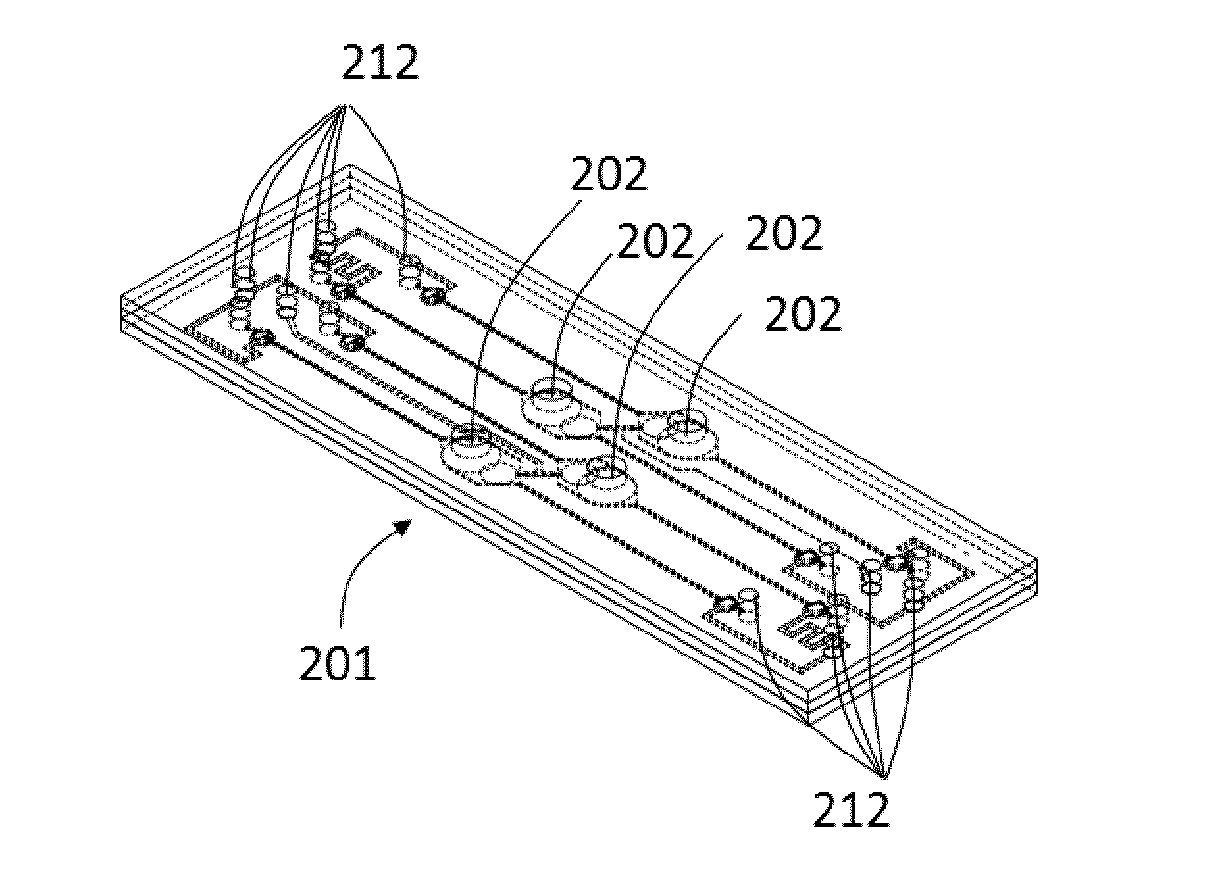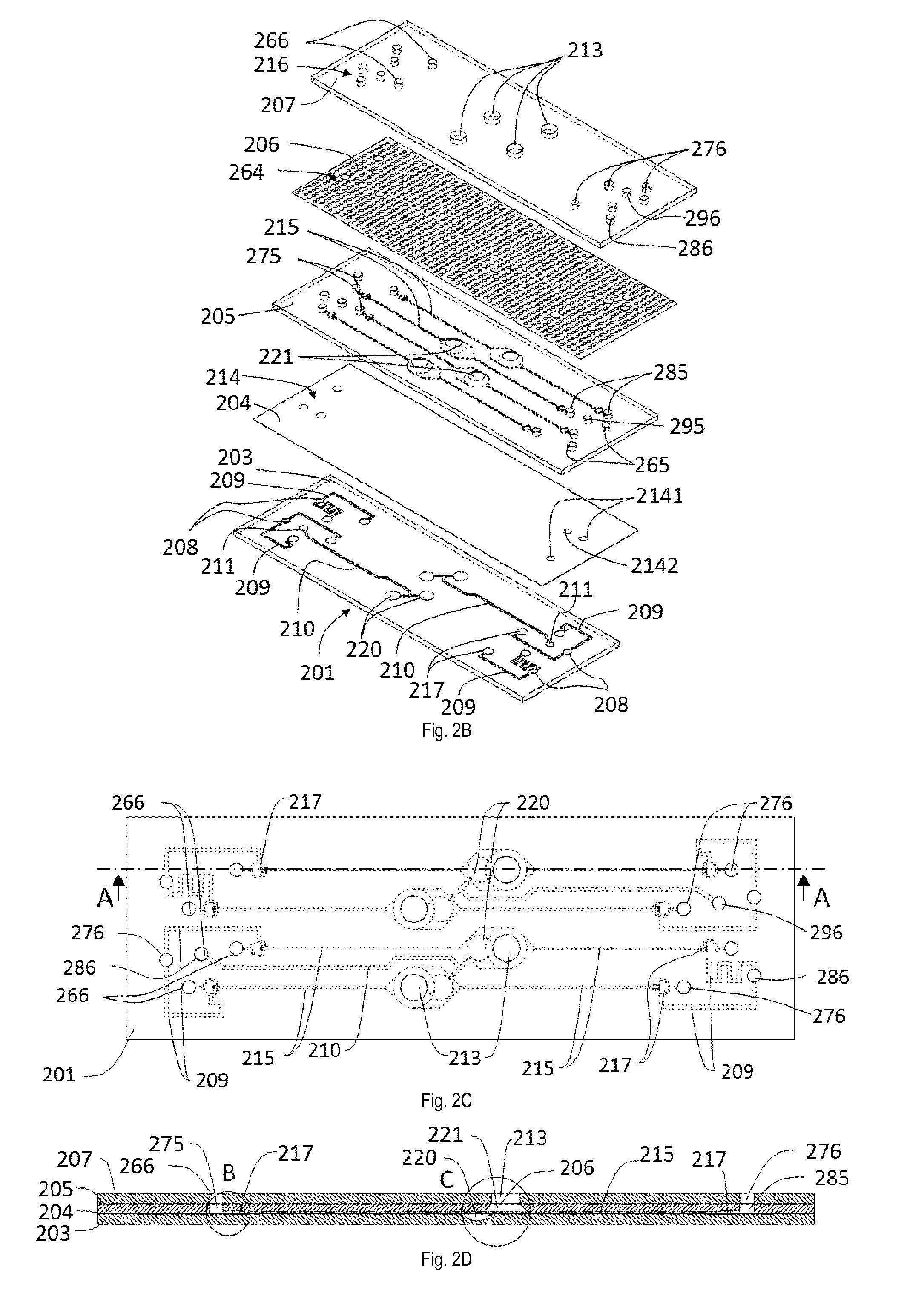Device for in-vitro modelling in-vivo tissues of organs
a tissue and organ technology, applied in the field of organ tissue invitro modelling devices, can solve the problems of poor human response, ethically controversial and costly, and inability to efficiently and reproducibly predict the toxicity and efficiency of compounds in humans before launch of expensive clinical trials, and achieve the effects of simple, compact and efficient device implementation, and pressure in the valv
- Summary
- Abstract
- Description
- Claims
- Application Information
AI Technical Summary
Benefits of technology
Problems solved by technology
Method used
Image
Examples
first embodiment
[0101]FIG. 1 shows a system 100 for in-vitro modelling in-vivo tissues of organs as a device according to the invention. The system 100 has a bioartificial organ device 101 with a culturing membrane as an in-vitro-barrier 102. It further comprises a setup 106 having one or more CPUs 107 of a control unit connected to one or more pressure sources 108, a cell injector 109 and one or more pumps 103. The one or more pressure sources 108 and the cell injector 109 are controlled by the one or more CPUs 107 and are connected to the bioartificial organ device 101. The one or more pumps 103 are arranged in between a source reservoir 104 as medium source and the bioartificial organ device 101 which is also connected to a collecting reservoir 105 as medium sink. By means of the one or more pumps 103 and the one or more CPUs 107 a fluid flow from the source reservoir 104 to the collecting reservoir 105 via the bioartificial organ device 101 can be controlled. Although only one bioartificial org...
second embodiment
[0110]FIGS. 2A and 2B illustrate a perspective view of a bioartificial organ device 201 of a device according to the invention in an assembled view and in an exploded view. The bioartificial organ device 201 is equipped with four in-vitro barriers 202 and includes a plurality of ports 212 that will be described in more detail below. The bioartificial organ device 201 is composed by different body portions, including a bottom body 203 as third body portion, an actuation membrane 204, an intermediate body 205 as second body portion, a thin porous culturing membrane 206 and a top body 207 as first body portion. Each of the bottom body 203, intermediate body 205 and top body 207 has an essentially rectangular plate-like shape. Each of the actuation membrane 204 and the culturing membrane 206 has an essentially rectangular shape.
[0111]The bottom body 203 includes two deflection actuation channels 210 and four valve actuation channels 209 in which a fluid, preferably air, is arranged to c...
third embodiment
[0136]FIGS. 3A and 3B show views of a bioartificial organ device 2010 of a device according to the invention. In general, the bioartificial organ device 2010 is essentially identically embodied as the bioartificial organ device 201 described above. The bioartificial organ device 2010 comprises a bottom body 2030 as a third body portion with deflection actuation channels 2100, valve actuation channels, microvalve chambers 2170 and actuation chambers 2200 having limitation cavities. On top of the bottom body 2030 an intermediate body 2050 with perfusion channels 2150 and culturing chambers 2210 is arranged as second body portion wherein between the bottom body 2030 and the intermediate body 2050 an actuation membrane 2040 is sandwiched. On top of the intermediate body 2050 a top body 2070 with access chambers 2130 is arranged as first body portion, wherein between the intermediate body 2050 and the top body 2070 a thin porous culturing membrane 2060 is sandwiched. Sections of the cult...
PUM
| Property | Measurement | Unit |
|---|---|---|
| thicknesses | aaaaa | aaaaa |
| thickness | aaaaa | aaaaa |
| thickness | aaaaa | aaaaa |
Abstract
Description
Claims
Application Information
 Login to View More
Login to View More - R&D
- Intellectual Property
- Life Sciences
- Materials
- Tech Scout
- Unparalleled Data Quality
- Higher Quality Content
- 60% Fewer Hallucinations
Browse by: Latest US Patents, China's latest patents, Technical Efficacy Thesaurus, Application Domain, Technology Topic, Popular Technical Reports.
© 2025 PatSnap. All rights reserved.Legal|Privacy policy|Modern Slavery Act Transparency Statement|Sitemap|About US| Contact US: help@patsnap.com



